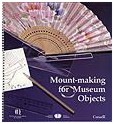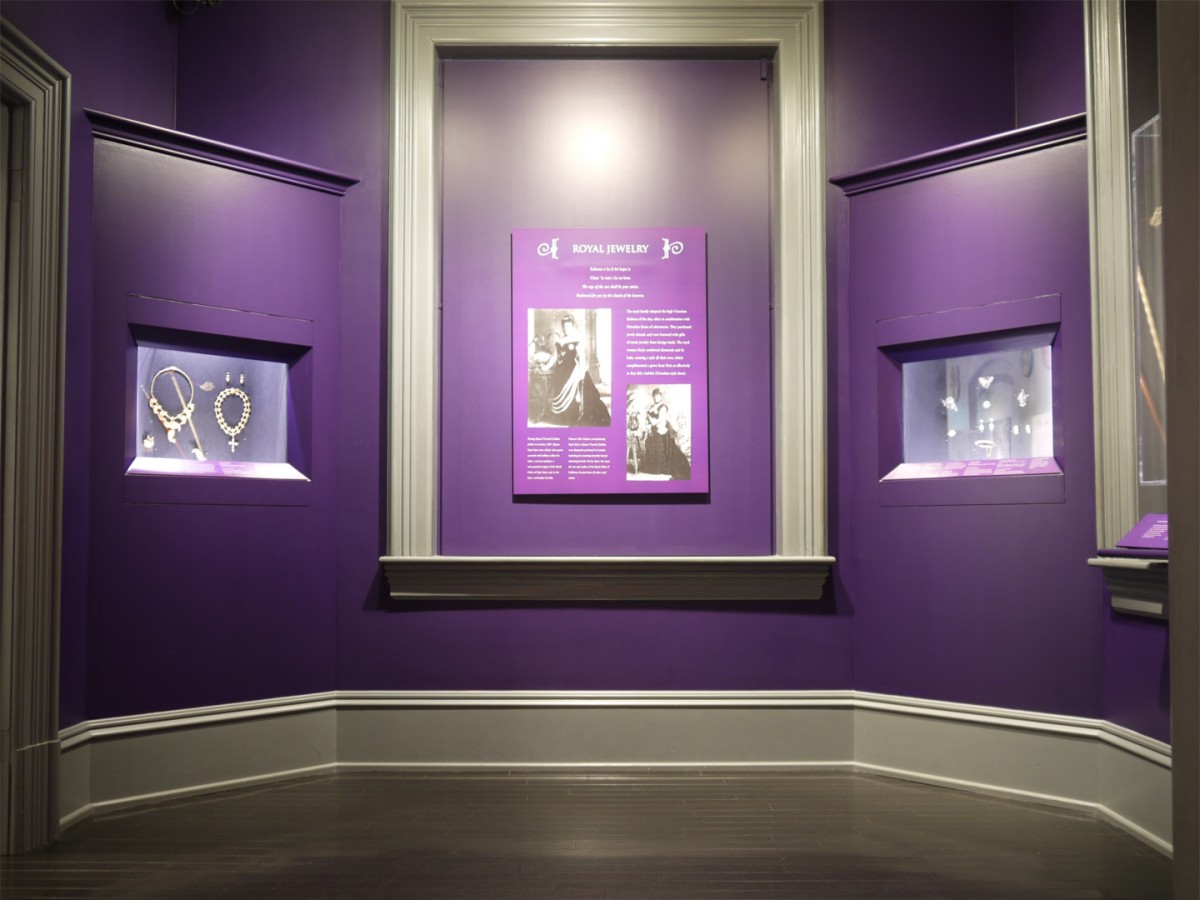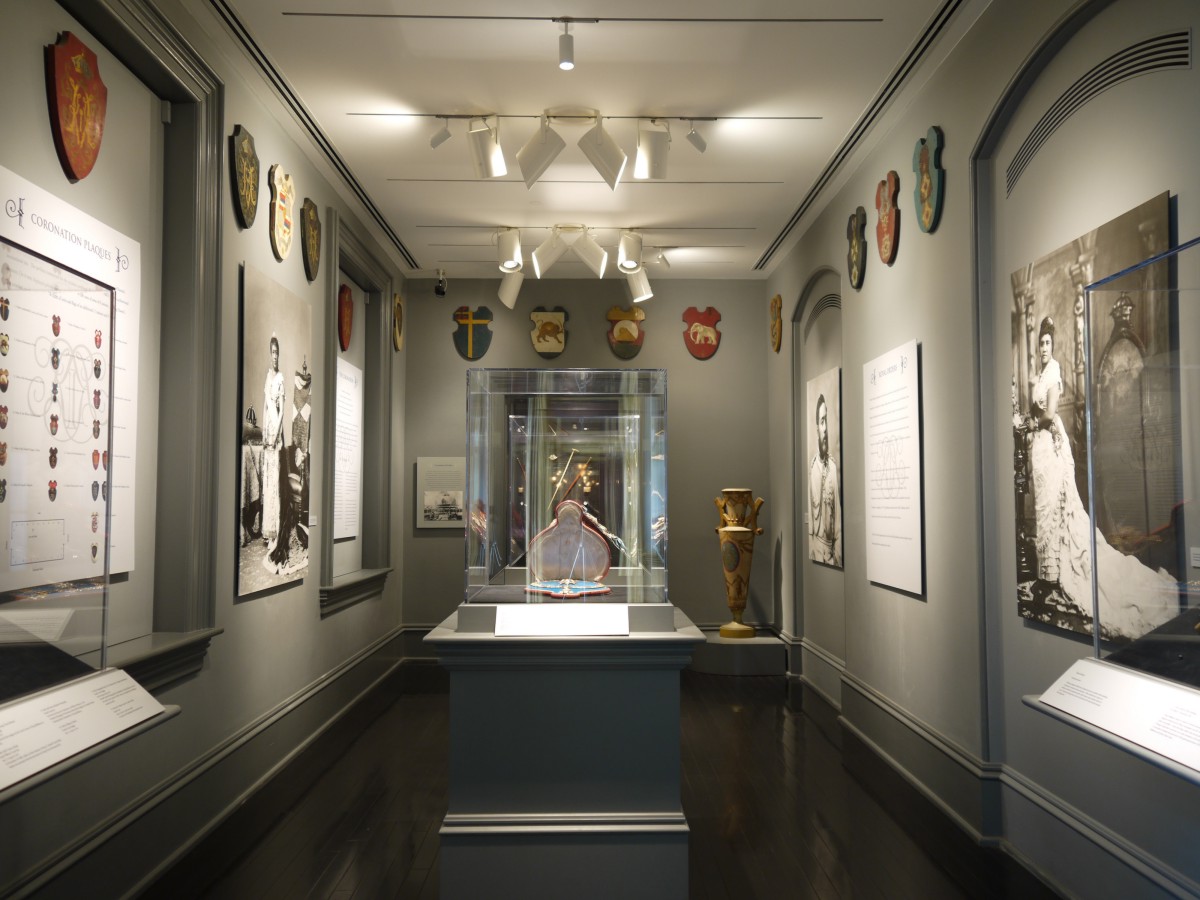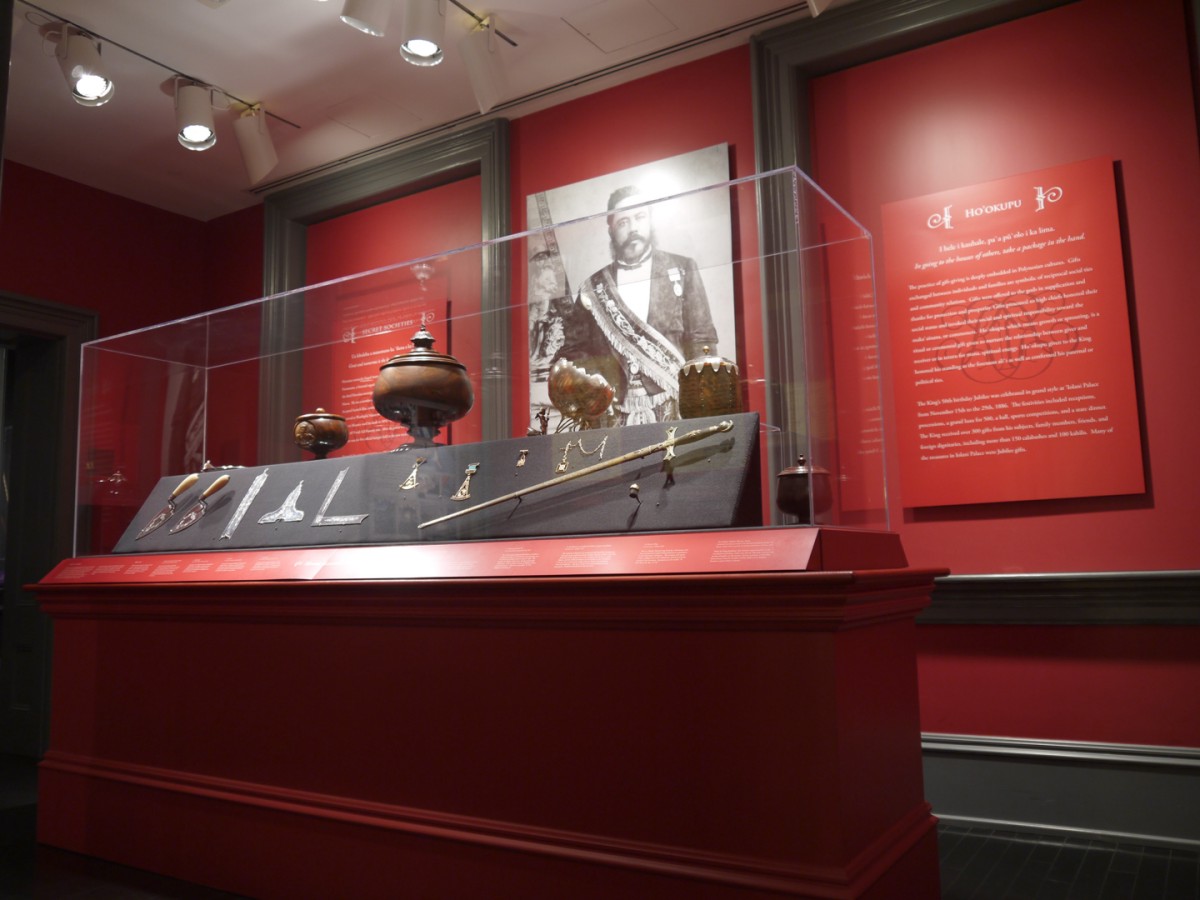|
CCI
Mount-making for Museum Objects by Robert Barclay, Andre
Bergeron and Carole Dignard
 |
|
Mount-making for Museum
Objects | CCI
Mount-making for Museum Objects by Robert Barclay, Andre
Bergeron and Carole Dignard provides specific
information and useful advice on the mounting of museum
objects. Topics covered include reasons for creating
mounts, recommended stable materials, tips on choosing
materials, the working properties of materials, and
methods for measuring artifacts. Objects with
custom-made mounts are illustrated with photographs and
line drawings. A supplier list and bibliography add to
the overall quality of this book.
|
Regional Workshops
Where you can find some of our instructors this
year:
John
Simmons
Philadelphia Academy of Natural
Sciences
- "Integrated
Pest Management for Cultural Institutions," 13 May
2014
Philadelphia History Museum
- "Exhibitions
for Cultural Institutions" (with Julianne Snider), 07
October 2014
School
of Library and Information Science at Kent State
University
On-line
graduate workshop 07 April to 02 May 2014
On-line
graduate classes 13 January to 05 April, 2014
- "Museum
Collections"
- "Foundations
of Museum Studies"
Juniata
College in Huntingdon, Pennsylvania
Undergraduate
course 20 January to 06 May 2014
- "Museum
Education" (with Julianne Snider)
Forthcoming
publications:
- "Foundations
of Museum Studies: Evolving Systems of Knowledge" with
Dr. Kiersten F. Latham
- "Fluid
Preservation: A Comprehensive Reference"
- "Collection
Care and Management" in "Museum Practice," edited by
Conal McCarthy
Karin
Hostetter
National Association for
Interpretation
- Mar 18, 2014 1 - 2 pm (Mountain) webinar for
National Association for Interpretation on evaluation
for front line interpreters
- May 6, 2014 1 - 2 pm (Mountain) webinar for
National Association for Interpretation on some aspect
on volunteer program management--specific topic still
to be decided
- Sept. 16, 2014 1 - 2 pm (Mountain) webinar
for National Association for Interpretation on some
aspect on volunteer program management--specific topic
still to be
decided
Yale
University, New Haven, CT
- Tuesday, April 22, 2014, 9:00 a.m. - 5:00
p.m. Certified Institutional Protection
Specialist/Supervisor (CIPS) Basic Protection Training
& Certification
- Tuesday-Thursday, April 22-24, 2014, 9:00 a.m. -
5:00 p.m. daily Certified Institutional Protection
Instructor (CIPI) Certification
American Alliance of Museums Annual Meeting,
Seattle, WA
- Wednesday, May 21, 2014, 12:00 - 4:00 p.m.
Management of Aggressive Behavior (MOAB)
- Thursday, May 22, 2014, 8:30 a.m. - 4:30 p.m.
Certified Institutional Protection Manager (CIPM)
Certification
|
|
American Alliance of Museums Annual
Meeting
May 18-21, 2014, Seattle, WA
Colorado-Wyoming
Association of Museums Annual Meeting
May
8-10, 2014, Cody, WY
Society For the
Preservation of Natural History Collections Annual
Meeting
June
22-28, 2014, Cardiff, Wales, UK
Association of
Midwest Museums Annual Meeting
July
14-17, 2014, St. Louis, MO
International
Foundation for Cultural Property Protection
Annual
Conference, Seminar, Exhibits & Certification
Program
August 9-14, 2014,
Denver, CO
Greater Than the Sum of
Our Parts, 2014 AASLH Annual Meeting
September
17-20, 2014, St. Paul, MN
Mountain-Plains
Museums Association Annual Meeting
September
28 - October 2, 2014, Aspen, CO
Western Museums
Association Annual Meeting
October
5-8, 2014, Las Vegas, NV
Southeast
Association of Museums Annual Meeting
October
20-22, 2014, Knoxville, TN
New England
Association of Museums Annual Meeting
November
19-21, 2014, Cambridge, MA |
|
Submissions and
Comments
How to submit an
article or upcoming workshops for inclusion in the
Newsletter:
If you would like to submit an
article, notice of an organizational meeting or upcoming
workshop for an upcoming Collections Caretaker
Newsletter, send your submission to peggy@collectioncare.org.
We are always looking for
contributions to this newsletter. Submission deadline is
the 10th of each month.
Have a comment or
suggestion?
Send it to peggy@collectioncare.org |
|
|
Welcome to
the Collections Caretaker e-Newsletter from
Northern States Conservation Center. The
newsletter is designed to bring you timely and
helpful content that is pertinent to situations we
all encounter in our museum and archives work.
Feel free to let us know what topics you would
like to see featured in Collections Caretaker or
even contribute an article.
| |
|
2014
On-line Course Schedule
Released
|
|
Current Certificate
Program participants receive 5% off
courses.
|
|
FROM FUNDAMENTALS
TO FACELIFT
By Heather Diamond,
Ph.D.
When I became the curator
of Iolani Palace in Honolulu three years ago, I
was a department of one with only academic
training in museum studies. The Palace, built in
1882 by Hawaii's second to last reigning monarch,
King Kalakaua, houses two floors of period rooms,
some basement galleries, and a collection of over
5,000 artifacts. At the time of my hire it had
been without a curator for 6 months and a
collections manager for 2 months. NSCC was a
godsend in helping me to negotiate the steep
learning curve between museum theory and
practice. My first course, MS 104:
Introduction to Collections Preservation, guided
me toward a basic understanding of the
fundamentals of caring for our collection and,
most importantly, provided me with enough
information that I was able to hire a capable
collections manager. My next challenge was dealing
with our outdated exhibits with little or no
budget.
To figure out where to
start, I enrolled in MS 106, Exhibit Fundamentals:
Ideas to Installation. I had no budget for
exhibits at the time, so I crafted plans for a
future exhibit as my course project. My focus was
on music in the palace, and I projected that it
could be installed in a room near our basement
galleries and currently used for storage. As we
progressed through the various lessons in the
course, we were introduced to a wide range of
exhibit components from the "big idea," visitor
flow, and interpretive signage to exhibit objects,
mounts, and lighting. My initial idea developed
into a series of four sub-themes: traditional
Hawaiian music and hula, compositions of the
Hawaiian monarchs, European influences, and the
Royal Hawaiian Band. I developed the beginnings of
a big idea: Music associated with the Palace
expressed cross-cultural influences and
inter-cultural communication.
The first place I actually
tested out principles from my exhibit course was
in our current basement galleries. The opportunity
came when we were gifted with a diamond that had
belonged to King Kalakaua and the donor also
contributed a modest amount of money to create a
more impressive setting for its display. I used
this donation to update three interconnected
exhibits-Western Regalia, Royal Jewelry, and Royal
Orders-designed in 2000 by an architectural firm.
In these galleries, period colors and casements
had been created to match architectural elements
with the goal of making them visually in synch
with the period rooms upstairs and as un-museum
like as possible. An award winning book designer
created signs that matched the wall colors. A few
large black and white photographs were included to
set off the artifacts. These galleries were
deliberately understated and conservative. The
exhibit course verified my suspicions that they
were also deeply flawed.
The wall colors of these
galleries, each visible from the next, were
jarring: a progression from light gray, to dark
gray-blue, to a brilliant red, all linked by
gun-metal gray baseboards and molding. Large,
covered window bays displayed only subtle gold
monogram decals. Jewelry was mounted on dark blue
velvet that reflected light rather than setting
off the brilliance of the diamonds. Lighting
throughout these galleries was general and lacking
impact. In the Royal Orders Gallery, a tall,
narrow space, a row of coronation shields near the
ceiling was lost in shadow and the floor was
illuminated at the same level as artifacts in the
central cases. Signs were in a small, elegant font
that was beautiful but very difficult to
read. Color contrast was low, there
was way too much text, and much of the text was in
italics. One sign was placed on a wall where
visitors would have their backs turned. Others
were placed flat on casement ledges, above the eye
level of young children or anyone in a wheelchair.
Cases containing many small artifacts had no
diagrams or numbers to aid viewers in connecting
text to object. Content wandered, with the
coronation being mentioned in two non-adjacent
rooms.
I set out to make these
exhibits functional and beautiful.
First I had the jewelry
exhibit space repainted a deep purple. Now the
visual transition between rooms is harmonious and
the jewelry has a dramatic backdrop. We replaced
blue velvet with matte black Veltex that allows
the diamonds to sparkle without the competition of
reflected light. I re-wrote most of our
interpretive labels so that they contained less
text and information was logically grouped. We got
rid of the italics, changed to a more standard
font, and heightened the color contrast for better
readability.
 |
| Jewelry
Exhibit at 'Iolani Palace, Honolulu,
HI |
We designed a visual key to
the coronation shields in the Royal Orders
Gallery. For the ledge signs, I had wooden wedges
constructed so that those labels are now mounted
at an angle rather than flat. All
artifacts are now numbered with map pins that
correspond to their informational labels. Finally,
we removed almost half of our track lights and
repositioned the remaining ones for maximum
impact.
 |
| Royal
Orders Gallery, 'Iolani Palace, Honolulu,
HI |
I transformed the Modern
Regalia gallery, which had been empty for several
months, into the Royal Pageantry exhibit. By
constructing a slant board for the long narrow
case, I was able to create a two sided exhibit
with Jubilee artifacts on one side and Masonic
artifacts on the other. I filled two
empty window bays with new interpretive signs and
added two photo murals and 2 smaller signs. As a
result, a gallery that had once seemed nearly
empty has life and focus.
 |
|
Royal
Pagentry Exhibit, 'Iolani Palace, Honolulu,
HI
|
Even though our facelift
was done on a shoestring budget, it has earned
many compliments. Better yet, I feel much better
prepared for the bigger exhibit project
ahead.
In 2012-13, I was able to
incorporate my initial music exhibit idea into NEH
and IMLS planning grant proposals. After receiving
both grants, we are now in the midst of exhibit
planning for five new exhibits in the Palace
galleries under the theme Points of Contact:
Cultures in Collaboration. The music exhibit
portion is drawn from what I devised for this
course except each of its four segments will be
expanded into its own room. We will be working
with an exhibit design firm for this major
project, so the process will be a far cry from
hand-sewing Veltex on a slant board, as I did for
the gallery facelift. However, I can't imagine
approaching this collaborative process without the
practical knowledge and confidence I gained
through the NSCC Exhibit Fundamentals
course.
Heather Diamond is the
curator at ʻIolani Palace, where she is in charge
of all aspects of exhibit development and
interpretation as well as overseeing collections
management. She the author of American
Aloha: Cultural Tourism and the Negotiation of
Tradition (UH Press, 2008), and co-author of a
forthcoming book on Hawaiʻi museums (UH Press
2015). She earned a Ph.D. in American
Studies at the University of Hawaiʻi at Mānoa
where she currently teaches online courses in
museum studies and Hawaii's multiculturalism.
Check out the 'Iolani Palace website at http://www.iolanipalace.org/ |
|
April 2014
Courses
MS104: An Introduction to
Collections Preservation
Instructors: Gretchen
Anderson & Helen Alten
Apr 7 - May 2,
2014
Every museum professional
needs a solid foundation in preservation
principles and techniques. Introduction to
Collections Preservation provides an overview of
current preservation issues from environmental
monitoring to collection cleaning, exhibit mounts
and storage furniture. Participants learn about
every aspect of the modern museum and how the
building, staff and fixtures affect preservation.
Subjects include the agents of deterioration, risk
management, object handling and transport, object
labeling, exhibit lighting, security, emergency
preparedness, materials for storage and display,
storage and exhibit philosophies, and condition
assessments.
MS106: Exhibit
Fundamentals: Ideas to Installation
Instructor: Lin
Nelson-Mayson
Apr 7 - May 16,
2014
Nearly every museum
develops exhibits, but how can we improve
communication with visitors while taking care of
our objects? Exhibit Fundamentals explores
exhibits from idea to final installation in a
variety of settings. Topics include exhibit
theory, the role of the museum's mission, creating
a timeline, accessibility and script writing. Also
covered are design elements, installation
techniques, object safety and security, visitor
safety and evaluations. Each student develops an
exhibit plan for his or her museum.
MS217: Museum Cleaning
Basics
Instructor: Gretchen
Anderson
Apr 7 - May 16,
2014
Cobwebs in the gallery,
dust on the dinosaur skeleton, mice in storage - a
dirty museum results in poor visitor experience
and poor collections preservation. In a museum,
cleanliness really is next to godliness. Museum
Cleaning Basics explores everything you need to
know about cleaning your collections. Participants
learn when to clean - and when not to clean. They
also learn how to make those decisions. Topics
range from basic housekeeping to specific
techniques for specific objects. You will learn
why cleaning is important and how to prevent
damage when cleaning. We will look at specific
techniques that minimize damage while getting the
work done. And we will discuss when to call in a
specialist, such as a conservator. Students will
create a housekeeping manual for their
institution.
MS237: Formative Evaluation
for Exhibits and Public Programs
**NEW**
Instructor: Karin
Hostetter
Apr 7 - May 2,
2014
Have you done some
evaluation but did not get helpful information? Do
you wish you could do some evaluation but think it
is too hard or too expensive? Do you wonder how to
get people to use an offered program more? You can
do it and it can be easy. This course will help
you determine what you really want to know, choose
the right process to gather the information,
develop meaningful questions, and figure out what
the results tell you. Please have a program or
text in mind (real or imagined) to work with
during the course. Note: this course will not be
looking statistical analysis.
MS254: Retail Store
Management for Small Museums
Instructor: Karl
Hoerig
Apr 7 - May 2,
2014
Retail stores play central
roles in museum operations. Most museum managers
and their boards or tribal councils recognize
stores' revenue potential. But stores can also
help serve the museum's educational mission,
support perpetuation and revitalization of
traditional arts, and impact audiences beyond the
museum's doors. Utilizing expert perspectives and
examples from diverse museum stores this course
will explain why a museum store should not be just
a "gift shop" and will present guidance on
inventory management, buying and pricing, retail
display, staff training and other administrative
issues faced by museum store managers.
MS001: The Problem with
Plastics (short course)
Instructor: Diana
Komejan
Apr 14 - 18,
2014
As we march boldly toward
the 22nd century, artifact collecting includes
that most fragile of materials - plastic. Not only
is it in our collections, but it's used to house
our collections, too. What problems have you seen?
What problems have others seen? What materials are
best? What can we, as caretakers, do to minimize
long-term damage? Join Helen for in this
mini-course for discussing care and deterioration
of plastics. Bring any questions you have about
plastics in your
museum. | |
|
Northern States
Conservation Center (NSCC) provides training,
collection care, preservation and conservation
treatment services. NSCC offers online museum
studies classes at www.museumclasses.org
in Collections Management & Care, Museum
Administration & Management, Exhibit Practices
and Museum Facilities Management.
Sincerely,
Helen Alten,
Director
Peggy
Schaller, Publications
Manager | | |